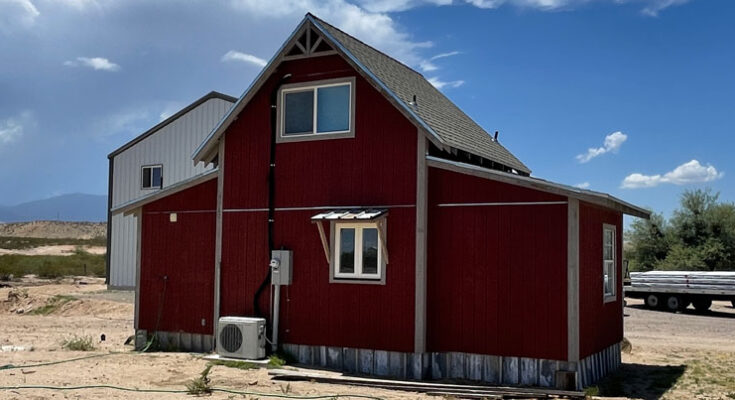Backyard sheds and small outdoor structures see a lot of use, and over time, wear and tear are unavoidable. Doors may warp, roofs can leak, and the Arizona sun alone can shorten the life of even well-built storage buildings. When problems show up, many homeowners face the same question: Is it worth repairing, or is replacement the better choice?
Signs It’s Time to Take Action
Outdoor structures rarely fail overnight. Most problems develop slowly, showing visible clues along the way. Rotting wood around the base, rust spreading on metal panels, or a roof that leaks every time it rains are all warnings that should not be ignored.
Doors that no longer close properly or stick when opening are another sign that a structure may be reaching the end of its reliable life. Even pests, such as termites or rodents, can cause enough damage to force homeowners to make a decision sooner rather than later.
When Repairs Are the Right Choice
Not every problem calls for a full replacement. In many cases, simple fixes can restore a shed or small structure to good condition. Replacing a few shingles, sealing small roof leaks, or sanding and repainting weathered surfaces can extend the life of a building without major expense.
Hinges, locks, and handles that wear out are inexpensive to swap, and even installing replacement shed doors can improve insulation, security, and daily usability. A fresh coat of paint or wood sealant can then add years of protection.
When Replacement Is the Smarter Option
Some damage goes beyond quick fixes. A shed with a sagging roof, rotting foundation, or walls that no longer stand straight often costs more to repair than it is worth. Arizona’s weather adds extra pressure: the intense summer sun can weaken materials, while heavy monsoon rains and windstorms can leave lasting structural damage. In these cases, starting fresh is often safer and more economical.
Replacement is also worth considering when a structure no longer fits a homeowner’s needs. A new shed can offer more space, stronger construction, and a better design than the old one ever did. Modern options often include sturdier components, such as reinforced roofing and upgraded hardware, providing homeowners with a safer and more functional building from the ground up.
Cost vs. Value: Weighing the Options
Deciding whether to repair or replace often comes down to cost. Small fixes such as patching a roof or repainting siding are usually affordable, but major structural work can add up quickly. If repeated repairs are needed every season, the long-term expense may exceed the cost of starting over with a more durable building.
Value also matters. A new shed or structure is an investment that should last for years, while ongoing patchwork only delays the inevitable. Homeowners who use their sheds daily for tools, storage, or hobbies may find greater peace of mind in choosing replacement over constant repair. The right choice strikes a balance between immediate budget concerns and long-term durability and usefulness.
Extending the Life of Your Structures
Whether a building is newly constructed or years old, routine care makes a significant difference in its longevity. Simple steps can help slow down damage: repainting exposed wood, sealing joints against moisture, and clearing debris from around the foundation. Regular inspections after the storm season help catch small issues, such as leaks or loose panels, before they become costly problems.
Pest control is another key factor. Termites, ants, and rodents can quickly compromise the integrity of a shed or storage unit if left unchecked. Insulating a shed is another way to extend its life, since regulating temperature protects both the structure and its contents. The Spruce explains how to insulate a shed with practical methods that improve durability over time.
Planning for Future Use
Deciding between repair and replacement also depends on how a shed or small structure will be used in the years ahead. A simple storage unit may only need basic upkeep, while a workshop or hobby space benefits from more durable construction and better ventilation. Considering future needs helps homeowners avoid investing in short-term fixes that will not meet their long-term goals.
Climate should also be taken into account when making decisions. Extreme heat, stronger storms, and shifting weather patterns are already impacting the lifespan of outdoor buildings. Coverage of climate change and agriculture shows how unpredictable conditions have become, underscoring the need for exposed areas to be built to withstand these forces. Choosing a replacement with these challenges in mind can save time, money, and effort over the long run.
Conclusion
Backyard sheds and small outdoor structures eventually face the question of repair or replacement. Minor issues can often be resolved with simple maintenance, but extensive damage or growing storage needs may necessitate starting anew. Costs, durability, and climate conditions all play a role in making the right decision. By weighing these factors carefully and maintaining routine care, homeowners can ensure their sheds remain safe, functional, and useful for years to come.







